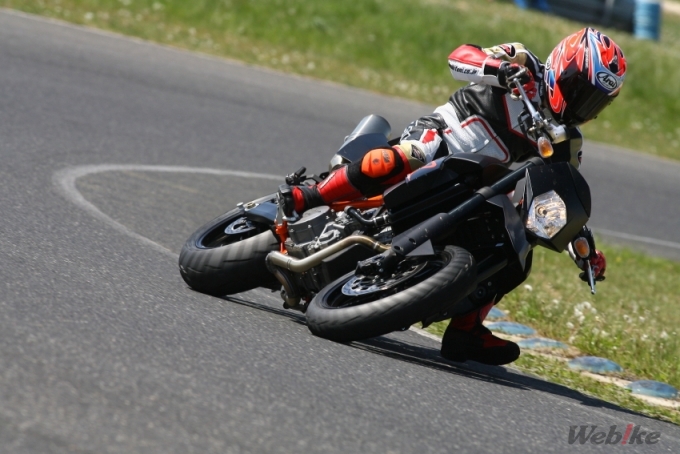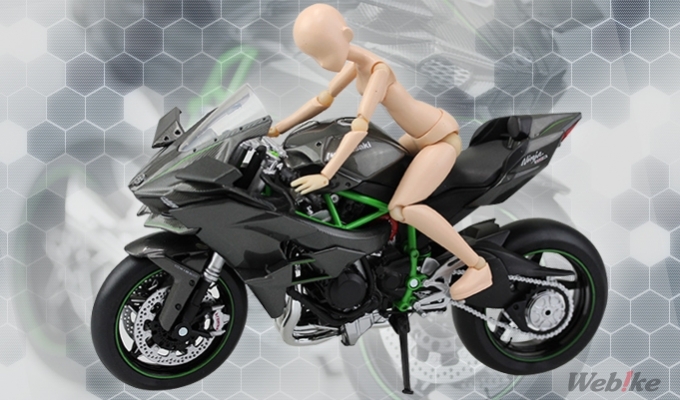As I explained in "Chapter 3," it is not a good technique to apply force to a motorcycle and lean it downward at a corner.
"Pushing down footpeg" leading to wrong weight shift
Same as the previous chapter, it is not a good way to push down the (inner) footpeg and lean the machine downward. The vehicle leans downward by pushing down the footpeg, while the rider's body is raised up by the reaction force.
Pushing the outer footpeg causes the rider's body to shift inward, but the machine is forced to move in the opposite direction. In the end, you can not lean both the vehicle and yourself.
In spite of this fact, this stereotype riding technique is widely spread. Moreover, there are many cases that proved racing riders convey this technique as a technique to change a direction. What's worse, some schools connected to manufacturers give such tutorials.
It would be the mid-1980s when this technique had begun to spread out among riders. It seems that riders who completely fit well into this technique instruction and were able to improve themselves are expanding this. Then, this looks a super right technique; but this is not so simple.
In fact, only a handful of riders can understand this technique and apply it to their rides. It is hard for most riders to deal with both their bodies and the machines well; ultimately they can't make a turn. Even worse, the failure leads to wrong weight shift to the inside footpeg.
What does this mean?
What is weight shift to inside footpeg? --- subjective action and objective action
In weight shift for direction change, you leave your body trunk to the outside (the weight is naturally shifted to the outside footpeg), determine the steering angle, and begin shifting weight with your hip; the inner leg sticks out. In fact, it is this timing when you stick out your legs on off-roads.
Sticking out the inner leg means relaxing the inner leg. In order to relax the inner leg, your inner leg needs to be in the state that muscle is put just before the absolute edge. This is what weight shift to the inside footpeg indicates.
Therefore, the weight shift to the inside footpeg is not an intentional action but is a split-second event that the flexible body trunk movement creates as a result.
You naturally reach the state that you are pushing the footpeg rather than you deliberately push down the footpeg. For top riders, it is important to get a sense of shifting weight to the inside footpeg; what they would truly like to say is not "let's push down the inside footpeg and lean the vehicle downward" but "let's ride so as to get such a sense."
In other words, if relaxing the inner leg is an objective action, putting muscle into the inner leg is a subjective action. It can be said about the stereotype riding technique, "pushing down the footpeg and leaning the motorcycle downward," that only the subjective action goes alone.
On body movements, "reaching a state" is totally different from "intentionally doing something." It is true that many riding techniques widely known confuse subjective actions and objective actions.





